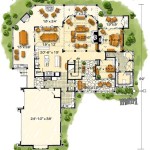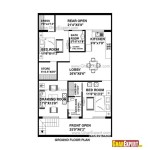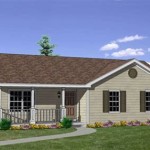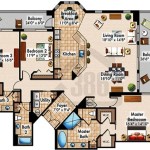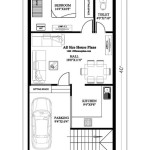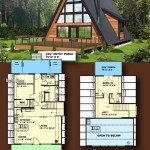Floor Plans for Row Houses
Row houses, also known as terraced houses or townhouses, are a type of housing unit characterized by their shared walls and identical facades. These dwellings are often found in urban areas and offer several advantages, such as affordability, efficient use of space, and a sense of community. When designing floor plans for row houses, there are specific considerations that architects and designers must take into account to ensure that the living spaces are functional, comfortable, and meet the needs of the occupants.
One of the primary design considerations for row houses is maximizing natural light. Given their close proximity to neighboring units, it is crucial to incorporate strategies that allow for ample daylight to penetrate into the interior spaces. This can be achieved through the use of large windows, skylights, and glazed doors. Open floor plans, with minimal walls and partitions, further enhance the flow of natural light throughout the house.
Another important factor to consider is privacy. Row houses share walls with their neighbors, which can potentially compromise the occupants' privacy. To mitigate this issue, architects often employ design techniques such as staggered floor plans, where the windows of adjacent units are not directly aligned to ensure visual privacy. Additionally, thoughtful placement of windows and balconies allows for natural ventilation while maintaining a sense of privacy.
Space utilization is another key design aspect for row houses, given their typically narrow and elongated shape. Architects must carefully plan the layout of the house to maximize the functionality of each space. This involves creating efficient circulation patterns, selecting appropriate furniture and fixtures, and incorporating built-in storage solutions to optimize space.
In terms of room arrangement, common floor plans for row houses include the following:
- Front-to-back floor plans: These plans feature rooms arranged in a linear sequence from the front to the back of the house. The living room and dining room are often located at the front, followed by the kitchen and family room in the middle, and the bedrooms at the back.
- Side-to-side floor plans: In these plans, the rooms are arranged side-by-side, with the living spaces facing the street and the bedrooms facing the rear courtyard or garden. This layout provides for more privacy and natural light.
- Split-level floor plans: These plans feature different levels connected by stairs. This allows for more vertical space and can create more privacy between different areas of the house.
When designing floor plans for row houses, architects must also consider the building code requirements and zoning regulations applicable to the specific location. These regulations may dictate certain aspects of the design, such as the height, setbacks, and fire safety requirements. By carefully adhering to these regulations, architects can ensure that the floor plans comply with the local building codes and provide safe and comfortable living spaces for the occupants.
In conclusion, designing floor plans for row houses requires careful consideration of factors such as natural light, privacy, space utilization, and building regulations. By incorporating thoughtful design strategies, architects can create functional, comfortable, and visually appealing living spaces that meet the unique needs of row house dwellers.

Building Designs By Stockton Plan 5 2322

The Endlessly Adaptable Row House Urban Omnibus

Exterior Of The Row House Figure 2 Floor Plans Scientific Diagram

Townhomes Townhouse Floor Plans Urban Row House Plan Designers

Pin Page

The Row House Floor Plans Redrawn From Lockwood 1972 P 14 19 And Scientific Diagram

Row House Plan Services At Best In Mumbai Id 10723797512

Modern House Plans By Gregory La Vardera Architect Row Concept Looking Back

Make Row House Plan By Shaikhyunus Fiverr

What Is Row House 2024 Best Designs Features Benefits

